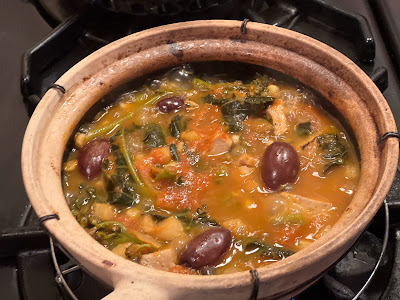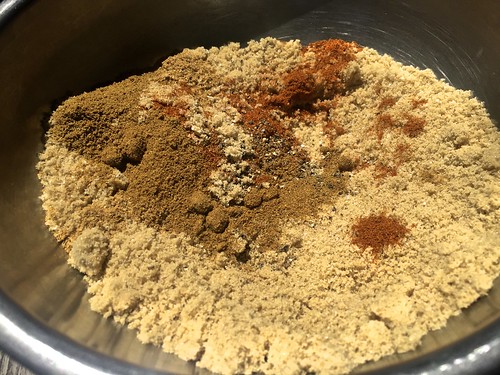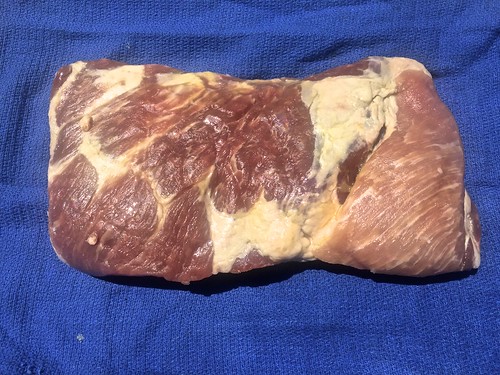My mother loved lobster. For Mother's Day we would pick her up from her apartment and drive to Little Saigon to Dong Khanh a restaurant an hour south of Los Angeles. With our cousins and sons, we would order a dozen dishes and eagerly turn the lazy Susan in the center of the large table so we could sample all the dishes.
It's difficult to think that my mom passed away sixteen years ago. She seems very much alive in my memory. Unfortunately, Dong Khan closed years ago. So, life as we all know, moves on.
At home, I make oven roasted lobsters topped with bread crumbs and sweet butter. Prepping the lobsters takes a bit of time but the result is well worth the effort.
Oven Roasted Lobsters
Many supermarkets have live lobsters. If you live near an Asian market, live lobsters are usually available along with a variety of other live seafood. Some markets will clean the lobsters without charge. In which case, you will only have to prep the individuals parts as described below.
For this recipe, because the claw shells need to be cut open, smaller lobsters 1 1/2 pounds each are preferred. Add a grilled steak and you'll have Surf 'n Turf. With a salad and a side vegetable like salt boiled broccoli, that is a beautiful meal. Dessert can be a fresh fruit salad and a nice chocolate eclair. It all depends on what the "dad" in your home loves.
The day ahead, the lobsters can be prepped and refrigerated covered with plastic wrap (not aluminum foil) and final cooked in the broiler just before serving.
Serves 4
Prep Time 30 minutes
Cooking Time 10 minutes
Total Time 40 minutes
Ingredients
4 1 1/2 pound live lobsters
1 cup bread crumbs, preferably home made
1/2 cup Italian parsley, washed, pat dried, finely chopped stems and leaves
2 tablespoons sweet butter
1 teaspoon olive oil
Sea salt to taste
Black pepper to taste
Directions
When you bring home the live lobsters, place them in the kitchen sink. Run water on them to cool them off. Do not submerge them in water. They live in salt water and fresh water will kill them.
Put 3" water into a large, tall stock pot. Place on stove with the burner on high. Cover. Bring water to a boil.
Preheat oven to broil or to the highest temperature possible.
Heat a sauce pan on a medium flame. Add olive oil, season with sea salt and black pepper. Add Italian parsley and mix well. Sauté until lightly browned. Add bread crumbs. Stir together and sauté until lightly browned. Set aside.
Using tongs, transfer the now red lobster to the kitchen sink. Run cold water over the cooked lobster. Continuing cooking the lobsters until all 4 are cooked.
If you want to make stock, which is a good thing to do, reserve the cooking water and add the shells after your meal, simmering the shells until the liquid is reduced by half, then strain out the shells and discard. The stock can be reserved in air tight containers and frozen for later use.
Working with one lobster at a time, place a lobster into a large bowl. Wear gloves if you want and be careful when you are working with the lobster that you do not cut your hands on the sharp parts of the lobster's body.
Twist off the claws at the body. Place them in the bowl. Twist off the tail and the flippers at the tail. Place them in the bowl. Place the body with the open side up in the bowl. Using the kitchen shears, cut the lobster tail in half. In the sink, rinse off the tail. Remove the black vein and discard.
If you enjoy the savory bits inside the body--which I do--pour them into a bowl. Personally, I discard the black egg sack and reserve the green tomalley, which is delicious. The video shows how to serve the tomalley on toast with avocado.
Using the kitchen shears, cut the body in half, so there are legs on each side. Continue to wash and clean the half-bodies to remove any residual parts of the egg sack or tomalley.
Separate each claw from its sections. Separate each of the sections.
Using the kitchen shears, remove half of the shell of each claw. Cut off the top of the shell from each of the sections.
Line a baking pan with parchment paper, a Silpat sheet or aluminum foil.
Place the tails, claws, sections and bodies onto the prepared baking pan, cut side up.
At this point, the prepped lobsters can be covered with plastic wrap (not aluminum foil) and refrigerated to cook the night before or in the morning. Remove the baking pan of lobsters from the refrigerator an hour before serving.
Spoon the seasoned bread crumbs onto the cut sides. Slice 1/8" pieces of sweet butter and place on top of the bread crumbs.








































